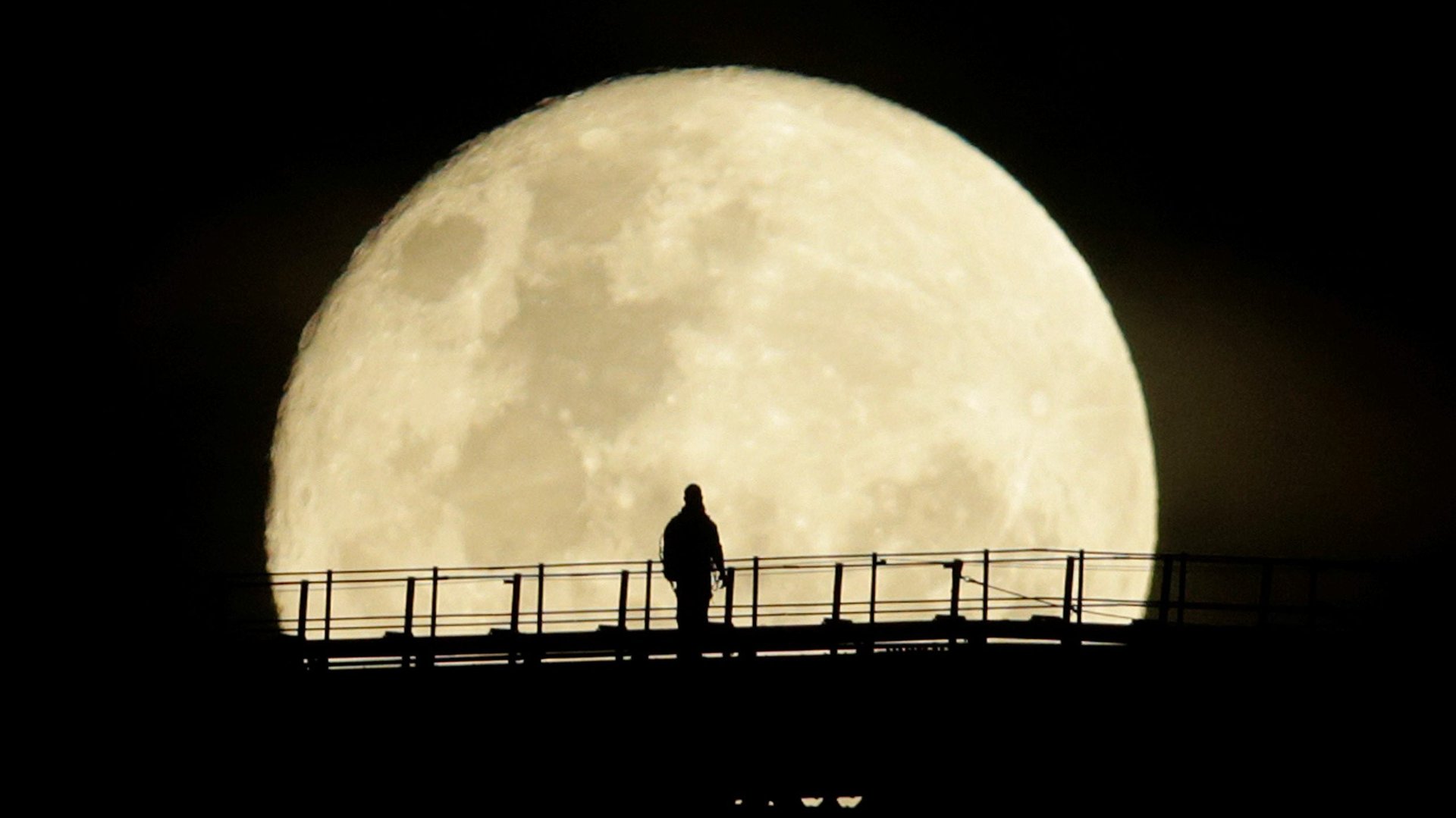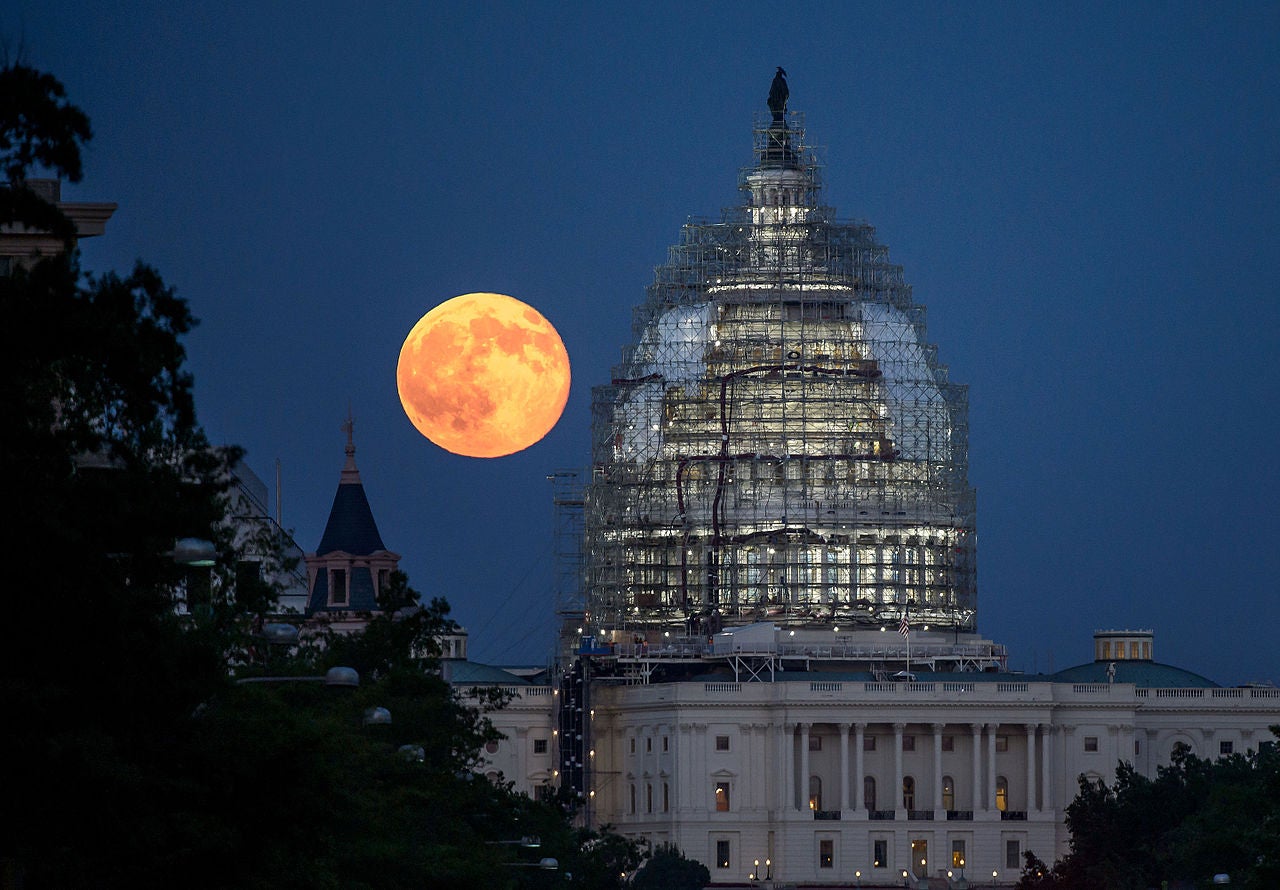How to watch the only visible “supermoon” of 2017 this weekend
It’s been a year since the visible supermoon last graced our skies, when the full moon was closest to the Earth. On Sunday (Dec. 3), the supermoon will have an encore and swing 26,500 km (approximately 16,500 miles) closer than usual.


It’s been a year since the visible supermoon last graced our skies, when the full moon was closest to the Earth. On Sunday (Dec. 3), the supermoon will have an encore and swing 26,500 km (approximately 16,500 miles) closer than usual.
Last year, the moon was the closest its been since 1948. That distance won’t be bested again until 2034. But this year’s supermoon will still appear 7% bigger and 16% brighter than the average full moon. As luck would have it, supermoons that occur during the winter months in the northern hemisphere also look larger than supermoons during other times of the year. That’s because the Earth is closer to the sun, and the sun’s gravity tugs the moon closer to the Earth.
When can I see the supermoon?
The best time to enjoy the supermoon is right after moonrise and before sunrise, when the moon is sitting on the horizon. It will appear its biggest and brightest because of a “moon illusion” effect that’s created when you are able to compare the lunar body to other objects for scale, like buildings and foliage. Check your local moonrise time here.

If you miss the moonrise, don’t worry. The supermoon will still be great as it traverses the sky. According to University of Arizona professor Gurtina Besla, there’s also a peak viewing time at 3:45 a.m. ET on Monday, Dec. 4.
If you miss the moon the day of, you can continue to enjoy a larger-than-average moon for the following few days. It just won’t be a full moon.
Can I see the supermoon without going outside?
If it’s too cloudy, or too cold to go outside, there are options to beam the supermoon straight to your living room. The Virtual Telescope project provides a livestream of its rise over Rome’s skyline, beginning at 16:00 UT. If you choose to watch it live, check what local time you should tune in here.
What’s the best way to photograph the supermoon?
To take a picture of the supermoon with a smartphone, tap on the moon on the screen and hold your finger in place to lock the camera’s focus. Then adjust the exposure slider that appears next to your finger to get the right balance of light for your shot.
If you’re using a DSLR, NASA’s senior photographer Bill Ingalls recommends that you use the daylight white balance to adjust for the sunlight being reflected off the moon. He says that it’s important to keep in mind that the moon is a moving object. “It’s a balancing act between trying to get the right exposure and realizing that the shutter speed typically needs to be a lot faster.”
To get an original shot, Ingalls suggests taking a picture that puts the moon in context of a local landmark, something that gives your photo a sense of place. “Don’t make the mistake of photographing the moon by itself with no reference to anything,” say Ingalls. “Everyone will get that shot.”
Do I need special glasses to watch the supermoon?
Fortunately, unlike the solar eclipse, the supermoon is safe to view with the naked eye! There’s nothing to worry about if you find yourself enthralled, and staring up into the sky for a very long time.